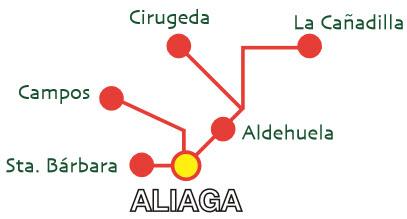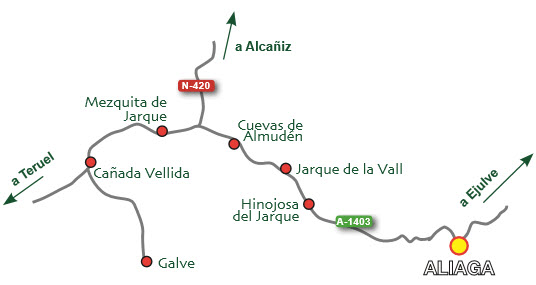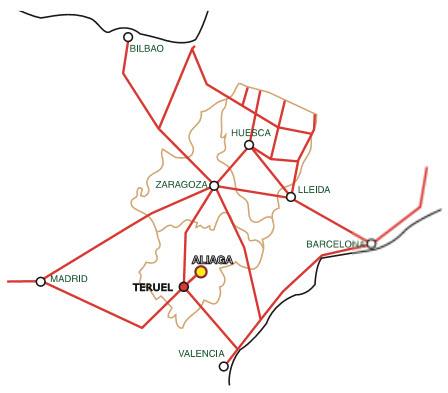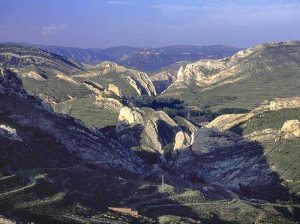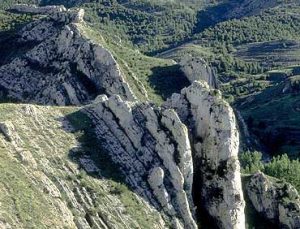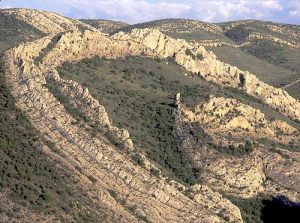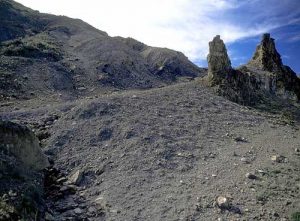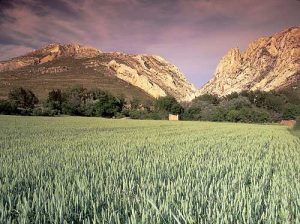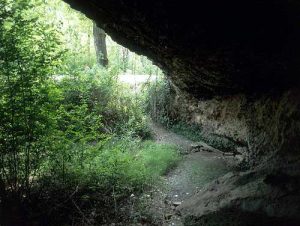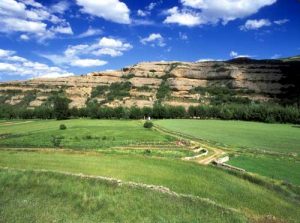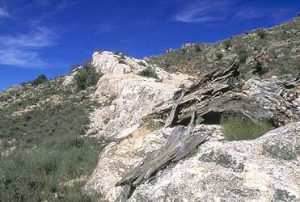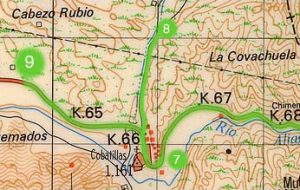Routes within the Geopark
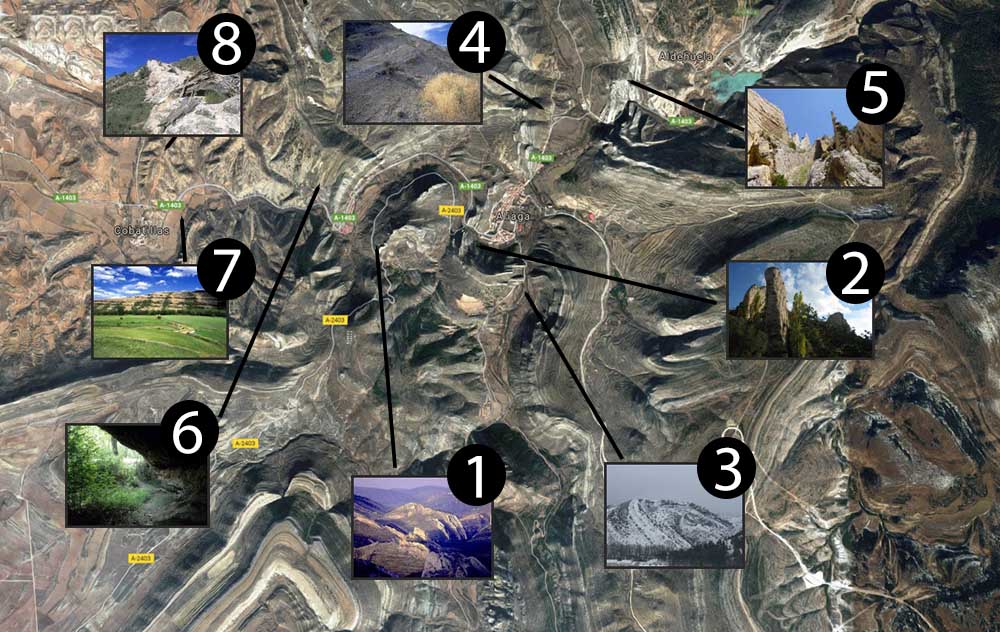
1. VIEWING POINT OF ALTO DE CAMARILLAS
Take the road to Teruel out of Aliaga town and 400 metres further on take the turning on the left, cross the bridge over the Val river and you start your ascent up to the town of Camarillas. When you reach the sign post that marks the entry point into point 1 of the Park, follow the directions to the car park and turn round at the top of the town. From the sign post walk 200 metres along the path marked with red arrows and you will come to the viewing point. From this site, the essential of the landscape and geology of Aliaga can be observed. The twisted crests resulted from sedimentation, folding and erosion processes developed during 200 million years.
2. LA PORRA
Take the road to Teruel out of Aliaga town and 400 metres further on take the turning on your left, cross the bridge over the Val river and on your left you will come across La Porra, a spectacular monolith sculpted by nature herself. Many fossil remains of molluscs, sea urchins and corals can be found within these limestones, which indicates its marine origin. Afterwards, the rock layer was folded by the Alpine Orogeny up to attain its present-day vertical attitude, and then slowly eroded by rain and rills.
3. LA OLLA
From the small promenade close to the Guadia Civil house, seeing towards the south, we discover La Olla. It is a prominent twisted rock crest which reflects a spectacular “snake-like” fold of Cretaceous limestone layers. It has provided the graphical motif for designing the logo of the Geological Park. This structure resulted from two successive folding events related to convergence between the Africa and Europe tectonic plates. Its landform expression is a consequence of subsequent erosion, more intensive in soft layers.
4. THE COAL SEAMS
Walk out of Aliaga towards La Aldehuela. Take the path on the left towards the Molar spring and continue further on for about another 100 metres. We find an otcrop of sandstones and coal seams. The latter are black or dark grey beds which were mined in the Aliaga zone since 1940 until 1964. Carbonized plant remains can be eventually observed, which grew during the early Cretaceous in a marsh associated to an estuary, once the seashore had moved away from the Aliaga area.
5. THE STRAIT OF LA ALDEHUELA/PEÑA DEL BARBO
Drive out of Aliaga in the direction of La Aldehuela until you pass the turnoff for Campos. You will then come across a sign post indicating the Geological Park and a car park sign. From this point on we recommend you go to the Peña del Barbo on foot. We can observe sandstone and oister shell layers. On the opposite riverside, the folds of Peña del Barbo, which resemble the head of a fish. Now just continue downriver to the dam and the power station. Above the dam you will see some of the towers for the cables that were once used to transport the coal.
6. HOYA MARINA/CUEVA CANALETA
Drive out of Aliaga along the road to Teruel until you come to the Santa Bárbara district. You can park your car at the end of this district or go through the tunnel at the exit and park it 400 metres further on next to Canaleta Cave. From the western tunnel entrance it can be seen the Hoya Marina coal mine, closed in 1964. Its name (‘marine hole”) is due to the abundant marine fossils existing in the limestones outcropping on the right side. Next to the coal mine we reach Cueva Canaleta, a wide cave open into conglomerates and exhumed by river erosion in the past. A nice spring can be found within it.
7. EL ROLLO
Drive out of Aliaga along the road to Teruel. You will go past the Santa Bárbara district. 2.5 kilometres further on take the turning to the left that takes you to Cobatillas (before you cross the tunnel). Pull over at the first closed bend to the right before you enter the town.. A curious concave rock wall can be seen close to the river: “El Rollo“. Thick conglomerate and silt beds (whose origin were sediments transported by old streams running in the opposite sense to the present-day river) are modelled by erosion of a meander of Río de la Val.. From this site, a panoramic view towards Tertiary reliefs is also allowed: El Cantalar hill, to the left, and Cabezo de la Muerte, to the right.
8. PEÑABLANCA
Drive out of Cobatillas towards Hinojosa de Jarque. Next to the east mouth of the tunnel cross the main road and take the track you will find ahead of you. One kilometre further on you will come to Peñablanca, which stands out due to its white-pinkish colour. This limestone was originated on the bottom of a small lake, from calcium carbonate dissolved in lake water.
9. LAS ALJECERAS
Take the road to Teruel out of Aliaga in the direction of Hinojosa de Jarque. 1.5 km. after you pass Cobatillas stop at an open area where there is a Geological Park signpost and a parking space to your left. The meaning of the place-name “Las Aljeceras” is “gypsum mines”. “Aljez” is a Mozarabic-origin word also used in some Spanish regions as a synonymous of “yeso”. It was worked in several small quarries until the 50’s. The mineral was baken in furnaces and then crushed using a millstone pulled by mules.
